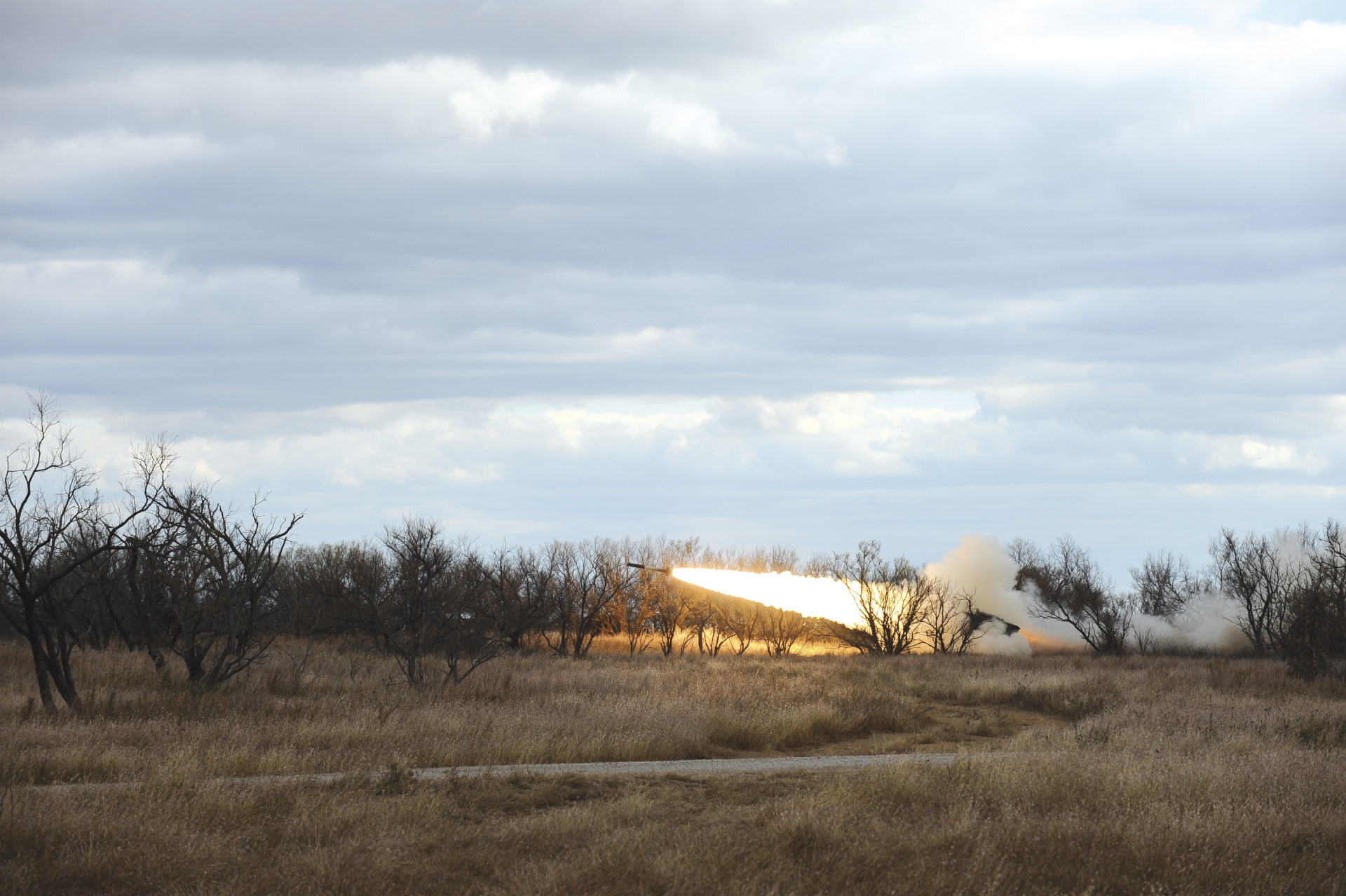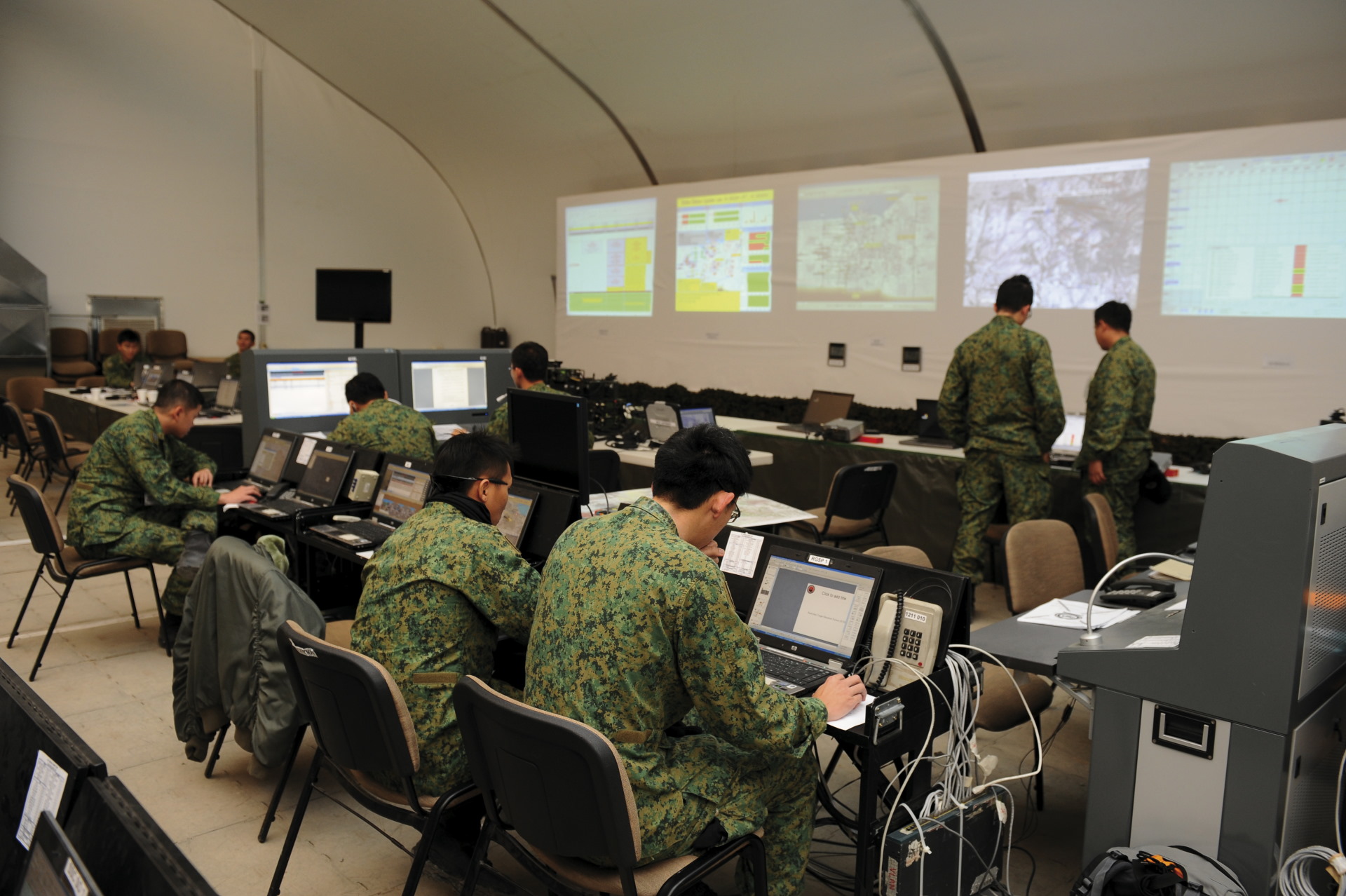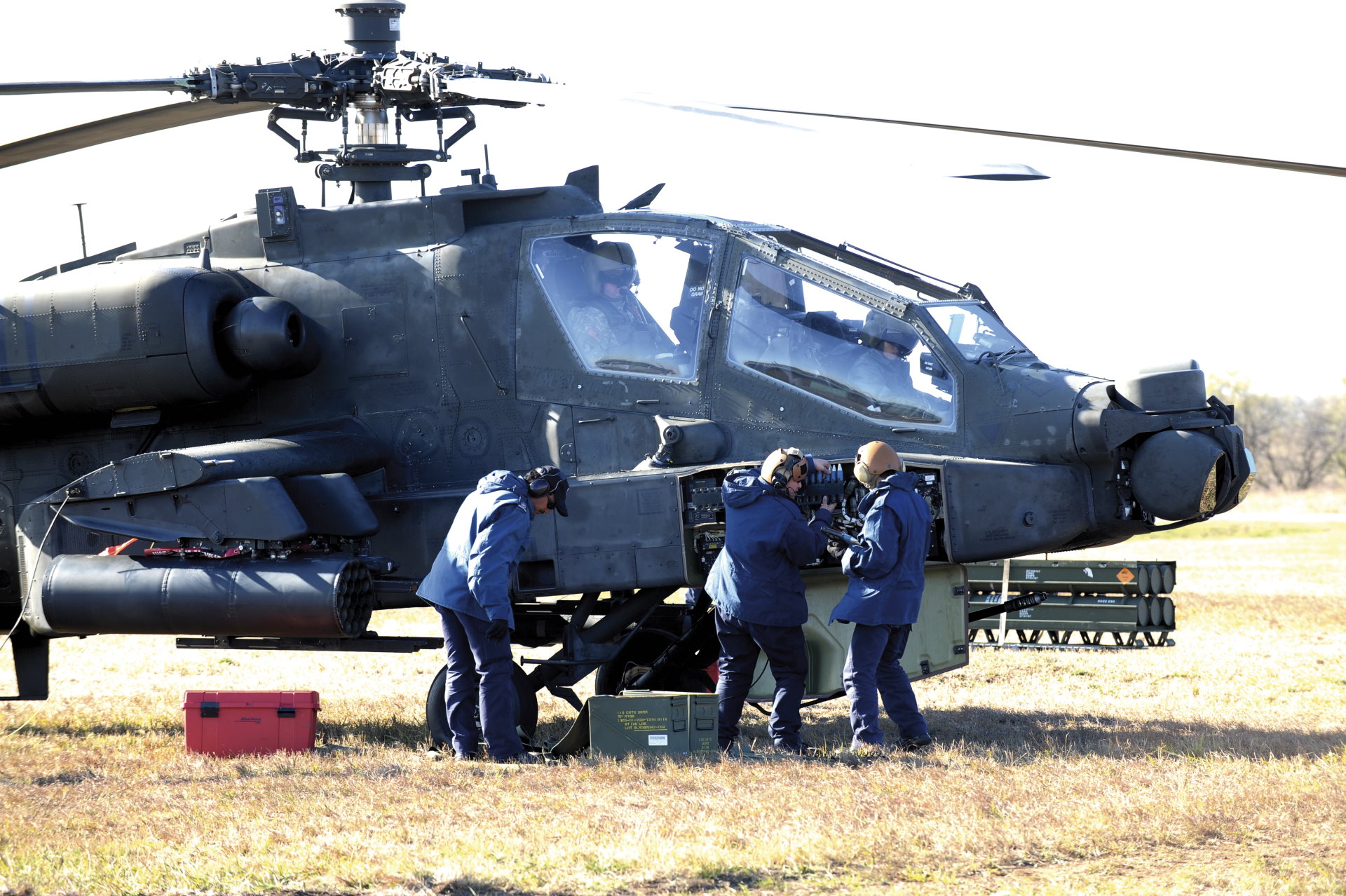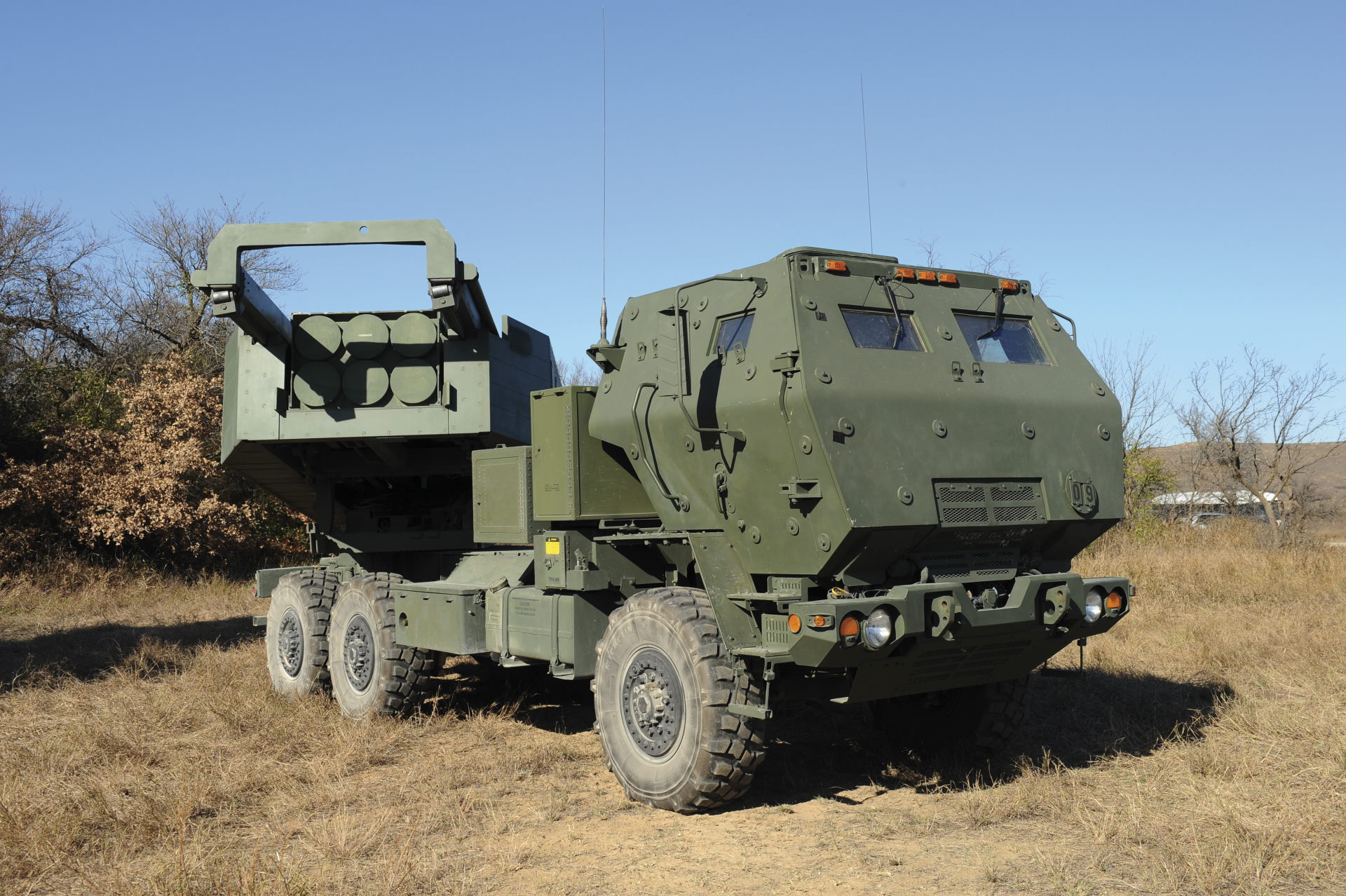OPS & TRAINING
INTEGRATION AT ITS BEST
04 Jan 2010
Exercise Forging Sabre 2009 was the epitome of seamless air-land integration for strike missions, boasting several “firsts” such as the first live firing using the High Mobility Artillery Rocket System (HIMARS) and the first dropping of live 2,000-pound bombs by F-16 fighters.

Exercise Forging Sabre 2009 was the epitome of seamless air-land integration for strike missions, boasting several "firsts" such as the first live firing using the High Mobility Artillery Rocket System (HIMARS) and the first dropping of live 2,000-pound bombs by F-16 fighters.

Speed and range. Two things that can make or break any military operation. These are what the HIMARS offers the Singapore Armed Forces (SAF), which fired the rocket launcher for the first time as part of an integrated strike exercise.
The live firing was conducted at the second edition of Exercise Forging Sabre, which was held from 1 to 24 Nov 09 in the training areas of Fort Sill, Oklahoma, United States. The first Exercise Forging Sabre was conducted in 2005 in 29 Palms, California.
Another milestone marked at Exercise Forging Sabre 2009 was the dropping of four live 2,000-pound laser-guided bombs by Republic of Singapore Air Force (RSAF) F-16 Fighting Falcons.
Coordination is key
As part of the exercise scenario, sensors including the Searcher Unmanned Aerial Vehicles (UAVs), the Commando Lasing Team and STrike ObserveRs Mission (STORM) teams worked seamlessly together with shooters - F-16s, AH-64D Apache Attack Helicopters, HIMARS and field artillery - to hit at important targets deep within enemy territory.
Through the surveillance information gathered by the sensors, the Division Strike Centre (DSC) builds a list of potential targets. From there, it plans and coordinates the use of air and land assets to engage multiple targets. The DSC then determines the desired effects, the timing and location of the strike, as well as the type of strike assets most suited for destroying the targets.

The Air-Land Tactical Control Centre (ALTaCC), on the other hand, provides support by managing the airspace in the area of operations. This is accomplished by creating a common air-land operating picture through the tracking of both air and land forces.
Exercise Air Director Brigadier-General (BG) Richard Pereira emphasised the importance of gaining air superiority in a land battle: "If you want to shape the land battle, it's important to free the air of enemy activity and action, so that your forces can move unimpeded."
The Head of Operations Headquarters for this year's Exercise Forging Sabre, Lieutenant Colonel (LTC) Nicholas Seow, added that a tighter sensor-shooter loop was achieved through synchronisation between the DSC and the ALTaCC.
Master Warrant Officer (MWO) Lim Sin Soon, who was in charge of technical operations at the DSC, said that accurate information was required to maximise the performance of the sensors and shooters in the operation.
"A constant challenge for the DSC is to ensure efficient communication between our air and land assets. For example, an F-16 fighter pilot would have a different set of communication and voice procedures from that of the HIMARS operators. The DSC has to master the procedures of all units to ensure that instructions are delivered in an accurate and timely manner to the different assets in the operation," he said.

Captain (CPT) Ng Kiang Chuan, Team Commander of the Commando Lasing Team, emphasised the importance of overcoming different perspectives in an integrated strike mission.
"The team serves as eyes on the ground and we send information on the activities of the enemy back to the DSC for subsequent planning. However, we often get a restricted perspective on the ground and this proves to be challenging when communicating with an F-16 pilot who has a wider view of the landscape," he said.
"To overcome this challenge, we have to put ourselves in the shoes of the pilot and attempt to visualise from his aerial point of view. In addition, we use as much descriptive language as we can to relay the information in order to avoid confusion," CPT Ng said.
BG Pereira noted that it is important that the soldiers understand how the different components come together and get a chance to be part of such integrated exercises. "This gives the troops the confidence that the processes work," he said.
Leaner and meaner
On site to witness the live firing portion of Exercise Forging Sabre 2009 on 18 Nov was Deputy Prime Minister and Minister for Defence Teo Chee Hean.
"The SAF is undergoing a transformation. The 3rd Generation SAF will be leaner and more potent. It will employ new operating concepts and systems, and optimise the use of our limited manpower resources," said Mr Teo, on the significance of Exercise Forging Sabre.
In addition, Exercise Director BG Tan Chuan Jin said that the SAF benefitted from exercises like Forging Sabre greatly as these helped the troops learn how to better manage different elements in a dynamic setting.
"Exercises like Forging Sabre are vital in building up the capabilities of the 3rd Generation SAF because they allow the Army and Air Force to practise working together and to hone their communication skills," said BG Tan.
He added that the SAF had been honing its capabilities constantly through various air-land integration exercises such as Lightning Warrior and Wallaby which are held regularly in South Africa and Australia respectively.
Commanding General for the United States Fires Centre of Excellence and Fort Sill, Major General (MG) David Halverson, who witnessed the live firing, commended the efforts of the SAF in the coordination and execution of the mission.
He said: "It is apparent that the SAF has tremendous attack and defence capabilities as seen in the successful execution of the live-firing exercise. I witnessed a world-class effort earlier with the complex coordination of the various land and air assets such as the F-16s and the HIMARS."

Accurate and deadly
The HIMARS possesses the ability to engage targets up to 70km away and to fire a full load of six rockets within 45 seconds, and it requires less than 20 seconds to prepare for firing.
Said Commanding Officer 23rd Battalion, Singapore Artillery (23 SA), Lieutenant Colonel (LTC) Lek Seng Khoon:"The HIMARS can travel up to a speed of 94 kilometres an hour. In addition, the HIMARS is highly mobile and can shoot and scoot in less than 20 seconds. These capabilities enhance the survivability of our troops as they can get in and out of the area quickly."
He added: "The HIMARS is capable of great precision fire and power. These, coupled with its other abilities, make it a valuable asset to the SAF s family of shooters."
Men from 23 SA had commenced training with the US Army's HIMARS in March 2009.
The first fully-operational HIMARS tailored to the needs of the SAF will join the 3rd Generation SAF's family of shooters by June this year.

Seamless integration
Sensors like the Unmanned Aerial Vehicles (UAVs), Strike ObserveRs Mission (STORM) and Commando Lasing teams fan out to detect and locate enemy targets.
They relay enemy locations to the Air-Land Tactical Control Centre (ALTaCC)and the Division Strike Centre (DSC). The DSC collates the information before making an informed choice about the timing and location of strikes, as well as the type of assets most suited for the targets.
For most ad hoc targets, shooters like the F-16s and Apaches are selected. Other targets are engaged using field artillery, while those deeper in enemy territory are fired upon using the HIMARS.
ALSO READ IN OPS & TRAINING

Exercise Wallaby 2025: To see better, shoot faster
31 Oct 2025
The SAF focuses on complex strike missions and multi-domain integration in Exercise Wallaby 2025, the 35th edition of its largest unilateral overseas exercise.

Ex Wallaby 25 – Greater Integration and Complexity
25 Oct 2025
The 35th edition of the SAF’s largest unilateral overseas exercise is an opportunity for expanded scale and deeper integration towards an effective, networked fighting force.

Ex Forging Sabre ramps up use of unmanned assets in integrated strike operations
12 Sep 2025
In this 10th edition of Exercise Forging Sabre, the SAF sharpened its cutting edge for the dynamic modern battlefield, with expanded integration between manned and unmanned platforms.


